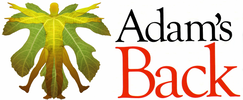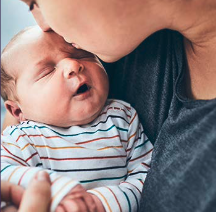Congratulations! Becoming a parent is a beautiful, profound experience. But your body takes a toll as it changes to accommodate and give birth.There are hormonal changes, an increased body weight, a further forward tilt of your pelvis and your lower back curve, or lordosis. This loads your joints, ligaments, and tendons, increasing the risk of pain and injury.
Then, after birth, you’ll be lifting, dressing, bathing, and moving a baby averaging 2.5−4.5 kilograms. As they grow, so too, does their weight. Fortunately, as their weight increases you’ve had time to heal and strengthen. But if you haven’t yet healed, this adds to the risk of spinal dysfunction and pain. With this in mind, how can you avoid backache? Moving your baby will soon become second nature, so it’s wise to develop correct lifting techniques. If your child is on the floor, bend your knees, squat, and bring your little one close to your chest. Tighten your core muscles, then push up with your legs − not your back − and try not to twist. Consider a baby wrap and then a supportive carrier to offset some of the workload. Perched on one hip is not ideal. When bottle or breast-feeding, sit in an upright chair, bring baby towards your chest and cradle them comfortably. Use a pillow to support the weight of your baby. A pillow designed for breast-feeding is a wonderful tool to protect your back from strain. As your little one grows, think about how you move them. Once they’re big enough to sit in a highchair, remove the tray when lifting them in or out. When transferring bubs in and out of the car, take them out of the car seat first; it might seem easier to lift them in the seat, but it’s not easier for your spine. When you’re ready, begin to gently strengthen your deep core muscles. Rectus diastasis − the separation or “splitting” of the abdominal muscle − affects up to 60% of people at some point in their postnatal journey. Strengthening your core may repair this problem. Regular walking can also aid recovery, plus, heading for a stroll can boost your mood and fitness. Your chiropractor can advise on suitable ways to strengthen and exercise during and after your pregnancy; and discuss treatment options for low back and pelvic pain. Being a new parent is challenging enough without having to deal with backache. Observing these simple tips will help to minimise the risk of back pain and allow you to enjoy every moment with your little one.
0 Comments
Leave a Reply. |
AuthorAdam's Back is a team of dedicated complimentary health professionals. Our aim is to support you in finding drug-free solutions for better health. Archives
July 2024
Categories |
Search by typing & pressing enter


 RSS Feed
RSS Feed